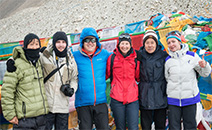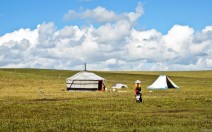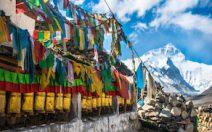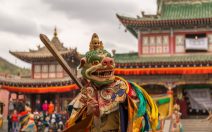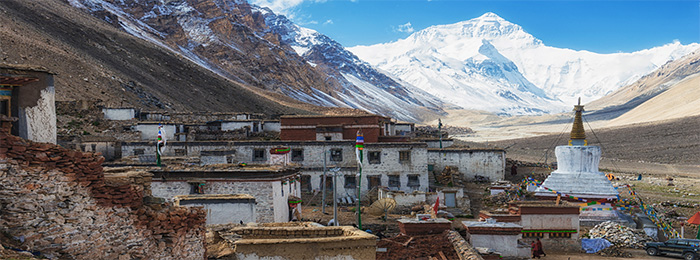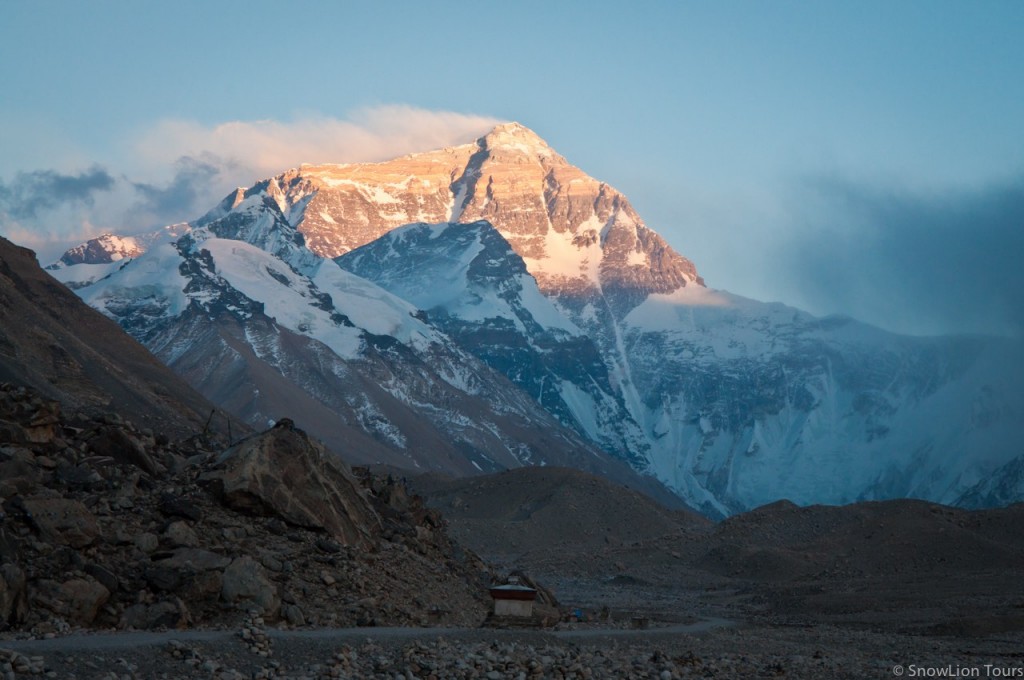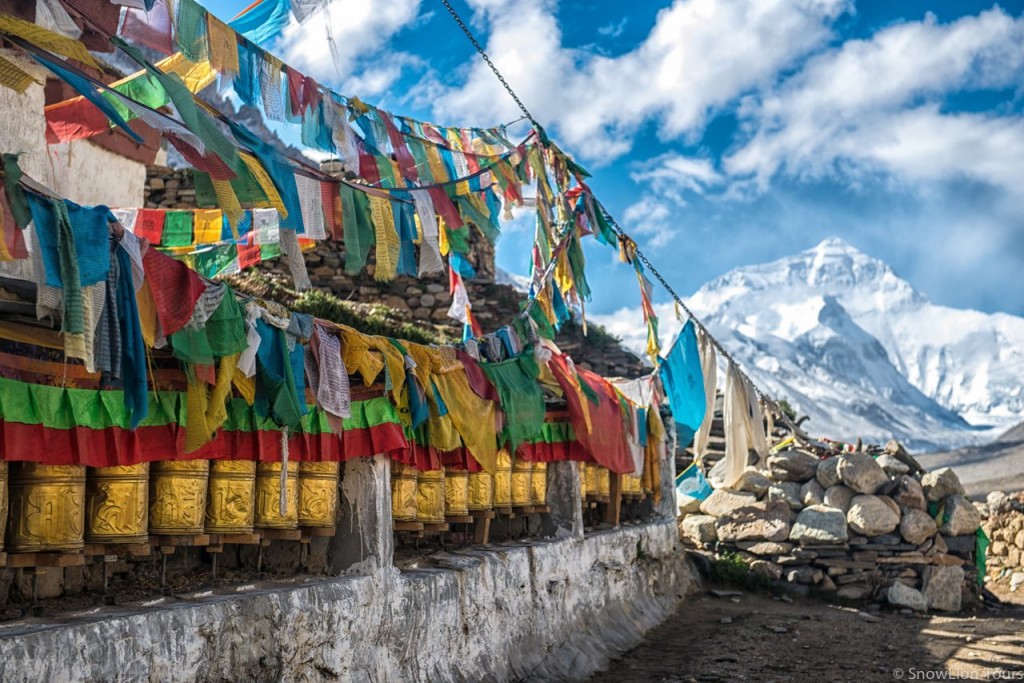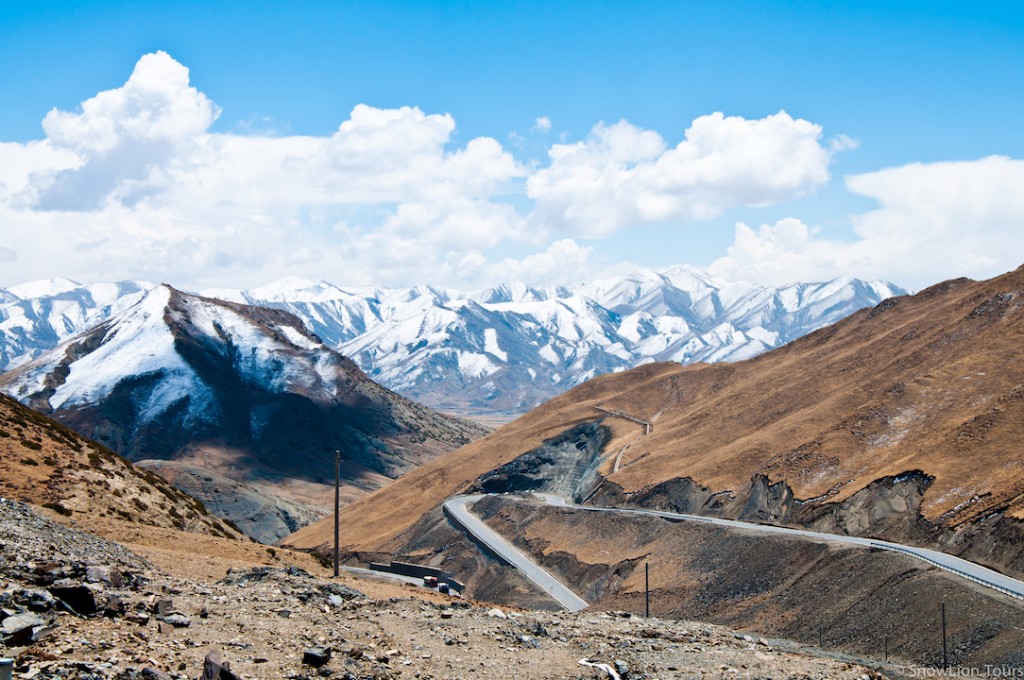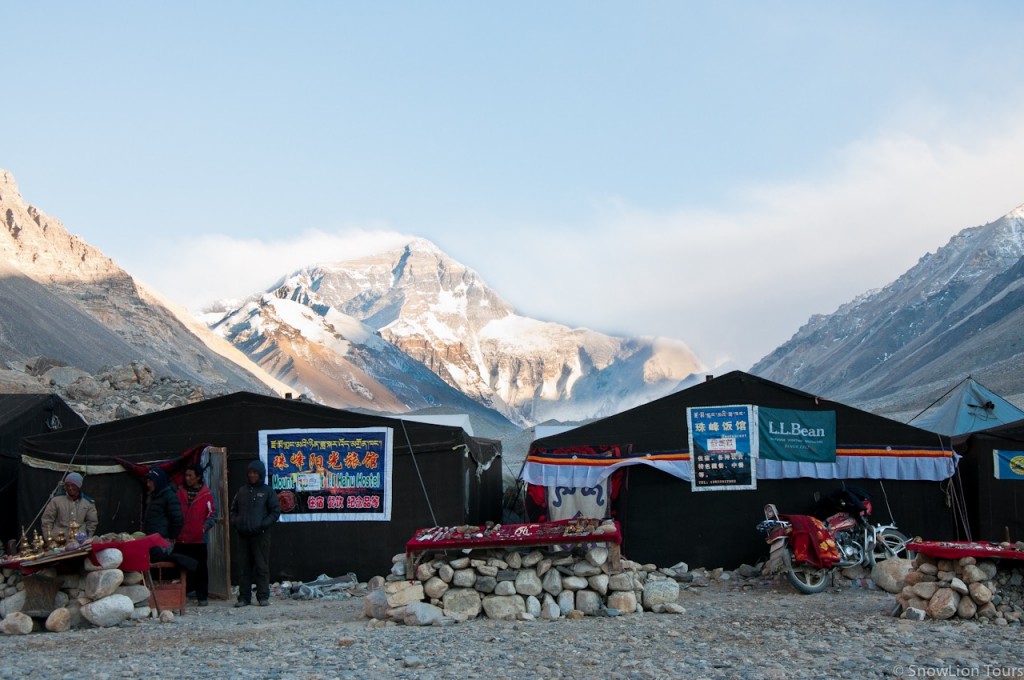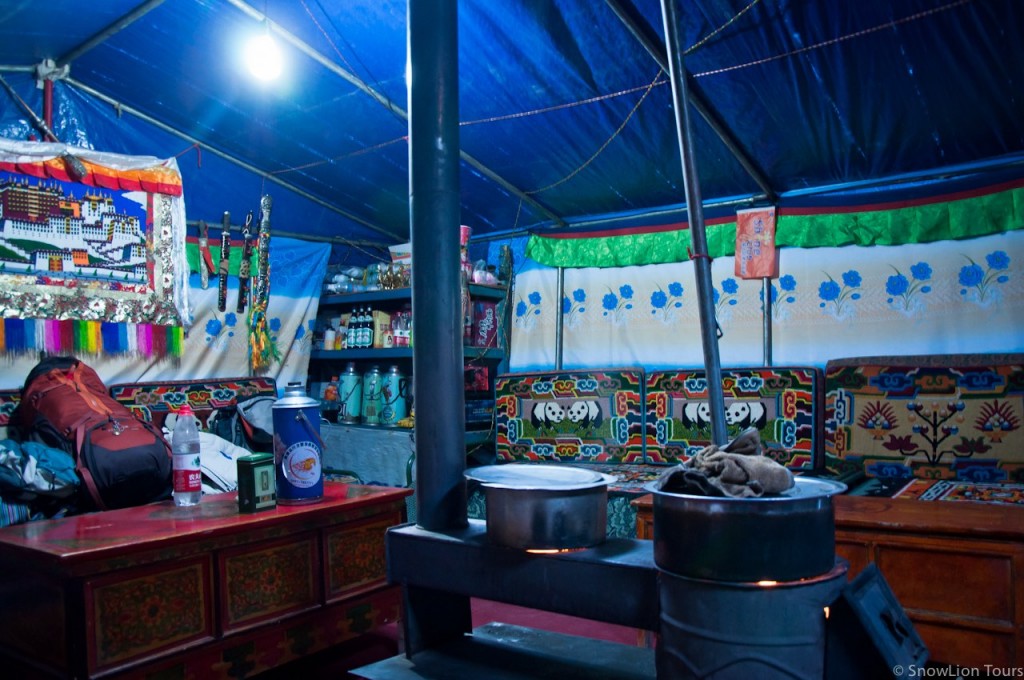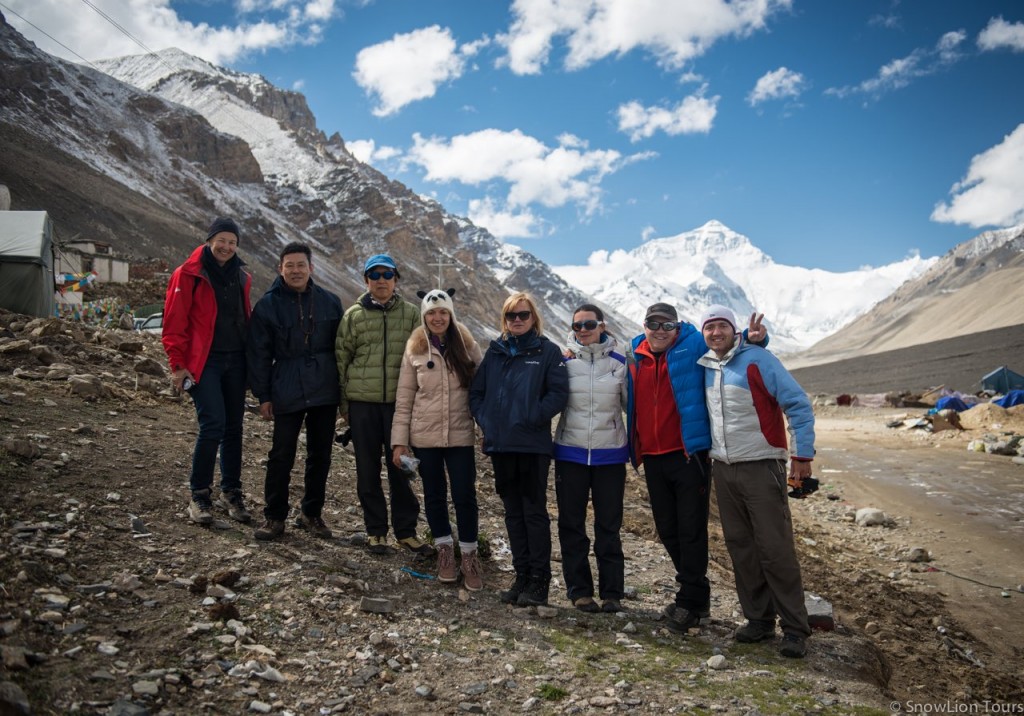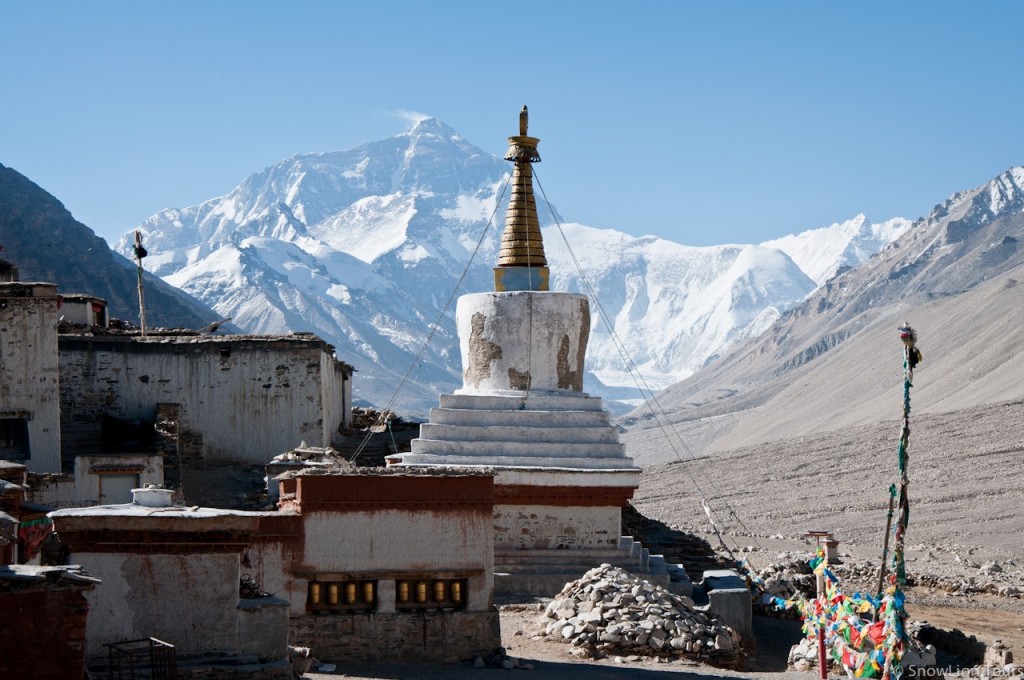Mt. Everest also known as Chomolangma in Tibetan and Sagarmatha in Nepali located in the Mahalangur section of the Himalayas on the border between Tibet and Nepal. The Nepali side of Everest is called the the South Face and Tibetan side is called the North Face. The peak of Mount Everest rises at an elevation of 8848 m (29500 ft). Mount Everest is accompanied by a number of substantial peaks, including Lhotse (8,516 m/27,940 ft), Nuptse, (7,855 m/25,771 ft ), and Changtobse (7,580 m/24,870 ft).
This incredible mountain has attracted many highly experienced mountaineers as well as capable climbers willing to summit the peak. There are two most common routes to climb Mount Everest: one is Southeastern route from Nepal side and the other one is Northern route from Tibet side. The Nepal side of the route is technically easier and more commonly used. The Northern route from Tibet side was discovered in 1921 by George Mallory during the British Reconnaissance Expedition, which was an exploratory expedition without intention to attempt the summit. The famous quote: “Why do you want to climb Mount Everest?” with the reply “Because it is there” – is from Mallory.
Though there were few attempts to ascend Mount Everest in the past, but all failed. The first mountaineers successfully summited Mount Everest and safely return back to the Base Camp were Tenzing Norgay from Nepal and Edmund Hillary from New Zealand. Their ascent was in 1953 via the Southeastern route.
The climbing season is set for April and May before the monsoon season starts in Himalayas. Some of the expeditions also come in autumn after the monsoon. In order to acclimatize the high altitude and thin air, mountaineers arrive at the Everest Base Camp approximately two months prior to their final ascent.
Everest Base Camps for mountaineers and for tourists are different on the Tibet side. Tourists are not allowed to visit the Base Camp for climbers, but they can clearly see it from distance. Visiting the Everest Base Camp for mountaineers only permitted for those who got climbing permits from Chinese Authorities and Chinese Mountaineering Association. While permit to visit the Everest Base Camp (EBC) for tourists is easy to obtain through all the travel agencies based in Lhasa, Tibet.
Everest Base Camp for tourists is located in about 8 km from Rongbuk Monastery, the highest monastery in the World. There are two options of accommodation: Yak hair tent guest house and Rongbuk monastery guest house. Tent guest house is operating from May to October while monastery guest house is open year round. If you’re traveling from May to October, we recommend to stay at the yak hair tent guest house – it is warmer, more comfortable and authentic. The tent guesthouse is located between Rongbuk Monastery and Everest View Point.
Rongbuk Monastery is a very small Monastery compare to the massive monasteries you would see along the way to Everest Base Camp. It consists of 2 temples and one stupa. The mountain ridge on the right side is a great spot for taking photo of Rongbuk Monastery with Mount Everest in the background.
Tibetan Buddhists believe that each mountain is a home of a mountain god or goddess. Thus Mt. Everest is the abode of Miyo Langsangma (Tib.: མི་གཡོ་གླང་བཟང་མ Wylie: mi gyo glang bzangma) – one of the Five Sisters of Longevity (Tib.: ཚེ་རིང་མཆེད་ལྔ Wylie: tsering mchedma), which are honored by Tibetans in general and especially by adepts of Kagyu sect of Tibetan Buddhism.
The region offers great hiking opportunities. You can walk from the monastery to the yak hair tent guest house, from where you can either continue walking to the Everest View Point or take a park bus. Here you can also visit Padmasambhava’s cave which is located near the yak hair tent.
Access to Everest Base Camp is more easier than ever. You can travel from Kathmandu, Nepal to the border town of Zhangmu/Dram and then continue your trip to Everest Base Camp or you can take the friendship highway from Lhasa to Everest. The Lhasa to Everest route is very smooth paved road. The last part of Shegar to Everest Base Camp road completed at the end of 2015.
We recommend spending one night at the Everest Base Camp for two reasons:
1) Though accommodation at the Everest Base Camp is quite basic for luxury groups but the Yak hair tent guesthouse is very warm and cozy place to crash for one night. The tents are made of Tibetan yak hair and it’s the traditional home for all the Tibetan nomad. The tents can resist strong sun, wind and rains. It’s a very spacious tent with 6-8 beds in each tent. The tent owners are local Tibetans from Everest region. SnowLion Tours arranges clients to stay in these tent guesthouses to support local business.
2) If you’re lucky with the weather condition, you will see incredible sunset and sunrise of Everest North Face which is the highlight of your once a life time travel to Tibet.
SnowLion Tours recommended tours to Mount Everest :
Tour 1: Lhasa – Shigatse – Everest Base Camp – Lhasa
Day 1: Arrive Lhasa
Day 2: Lhasa sightseeing
Day 3. Lhasa sighteeing
Day 4. Lhasa – Shigatse
Day 5. Shigatse – Sakya – Rongbuk Monastery – Everest Base Camp
Day 6. Drive back Shigatse
Day 7. Shigatse – Gyantse – Yamdrok Yumtso Lake – Lhasa
Day 8. Depart from Lhasa
Tour 2. Lhasa – Yamdrok Lake – Gyantse – Shigatse –Everest Base Camp – Zhangmu – Kathmandu
Itinerary:
Day 1: Arrive Lhasa
Day 2. Lhasa sightseeing
Day 3. Lhasa sightseeing
Day 4. Lhasa – Yamdrok Lake –Gyantse
Day 5. Gyantse – Shigatse
Day 6. Shigatse – Sakya – Shegar
Day 7. Shegar – Rongbu Monastery – Everest Base Camp
Day 8. Everest Base Camp – Zhangmu / Dram
Day 9. Cross the border and continue to Kathmandu
Tour 3: Old Tingri – EBC Trek
Itinerary:
Day 1. Arrive Lhasa
Day 2. Lhasa sightseeing
Day 3. Lhasa sightseeing
Day 4. Lhasa – Gyantse – Shigatse
Day 5. Shigatse – Sakya – Old Tingri
Day 6. First day of Old Tingri – EBC Trekking
Day 7. Second day of Old Tingri – EBC trekking
Day 8. Second day of Old Tingri – EBC trekking
Day 9. Arrive at Everest Base Camp and enjoy rest of the day
Day 10. Everest Base Camp – Shigatse
Day 11. Shigatse – Yamdrok Lake – Gyantse – Lhasa
Day 12. Depart Lhasa
Tour 4: Kharta Valley and Everest Kangshung Face Trek
Itinerary:
Day 1: Arrive Lhasa
Day 2. Lhasa sightseeing
Day 3. Lhasa sightseeing
Day 4. Lhasa to Shigatse
Day 5. Shigatse – Kartha vally Camp
Day 6. Trek Kharta –Yuepa-Shaola-Lake Shaotso ( 4400mts/4hrs ) Camp
Day 7. Trek Lake Shaotso-Shaola ( 4790Mts ) Methok Serchen-Zoksham ( 4000Mts/5-6 hrs ) Camp
Day 8. Trek Zoksham-Lake Tsonak-Sharlung ( 4250Mts/4-5 hrs ) Camp
Day 9. Trek Sharlung-Thangsum cave-Karma Chu-Pethang ( 4500Mts/4-5 hrs )
Day 10. Trek Pethang-Pethang Ringmo ( 4820Mts ) –Orka ( 4570Mts/3-4 hrs ) Camp
Day 11. Trek Orka-Eastern Everest base camp ( 5000Mts=Kangshung face ) and back to Pethang Ringmo ( 3-4 hrs ) Camp
Day 12. Trek Pethang Ringmo-Pethang ( 4500Mts/3 hrs ) Camp
Day 13. Trek Pethang-Thangsum-Tso Shorima ( 4700Mts/5-6 hrs ) Camp
Day 14. Trek Tso Shorima-Langma la ( 5240Mts )-Shomaling ( 4000Mts/5-6 hrs ) Camp
Day 15. Trek Shomaling-Lhundrup Ling-Kharta-Yuepa ( 3690Mts/4 hrs ) Camp
Day 16. Drive Kharta-Rongbuk monastery ( 5000Mts/130Km ) Camp
Day 17. Rest day at the Everest Base Camp
Day 18. Everest Base Camp to Shigatse (option to drive to Zhangmu and Kathmandu)
Day 19. Shigatse – Gyantse –Yamdrok Yumtso Lake – Lhasa
Day 20. Depart Lhasa
Tours related to Mt. Everest:
8 Day Tibet Tour – Trans Himalayan Overland
9 Day Tibet Tour – Incredible Everest
9 Day Tibet Tour – Himalayan Journey
12 Day Tibet Trekking Tour – Trek Old Tingri to Everest Base Camp
